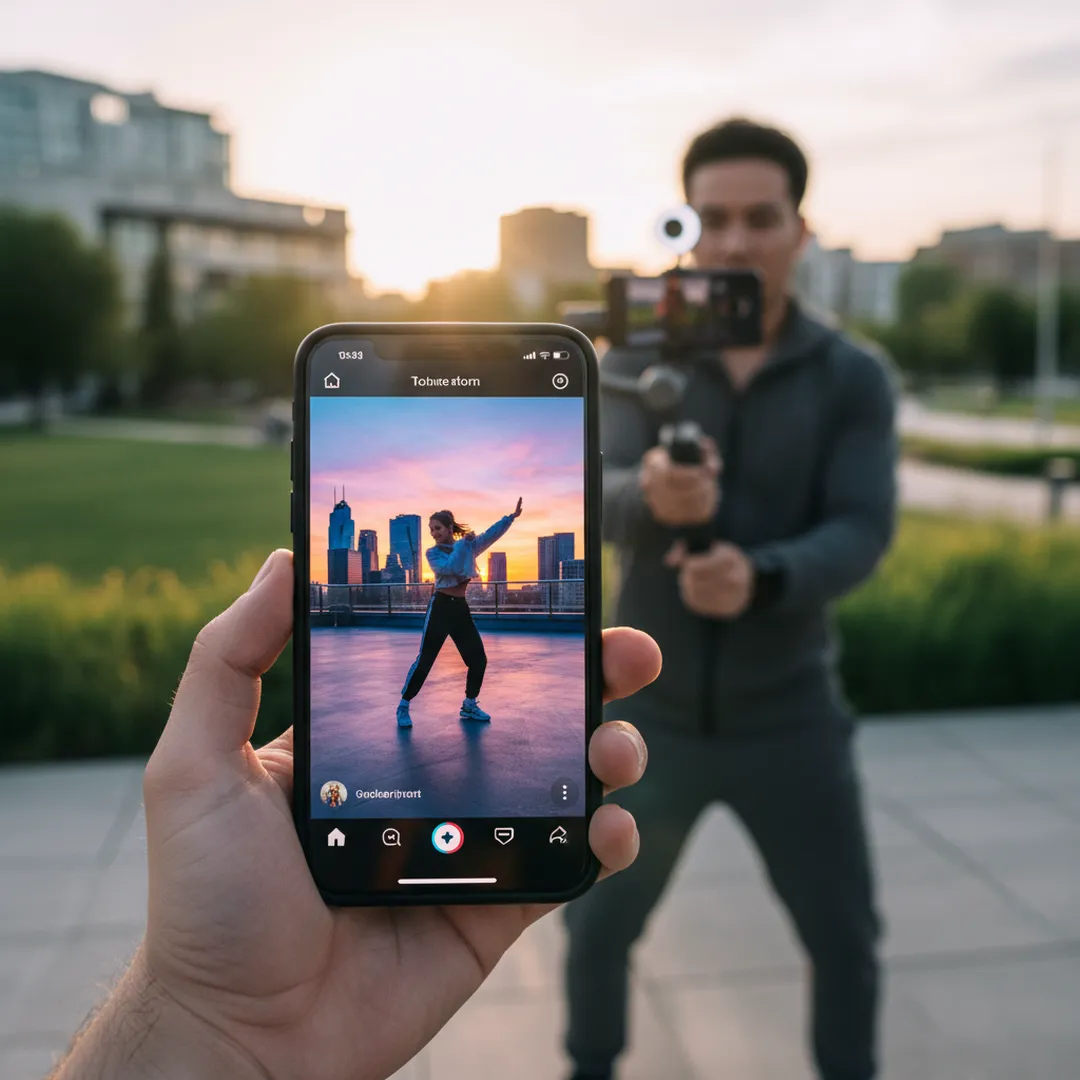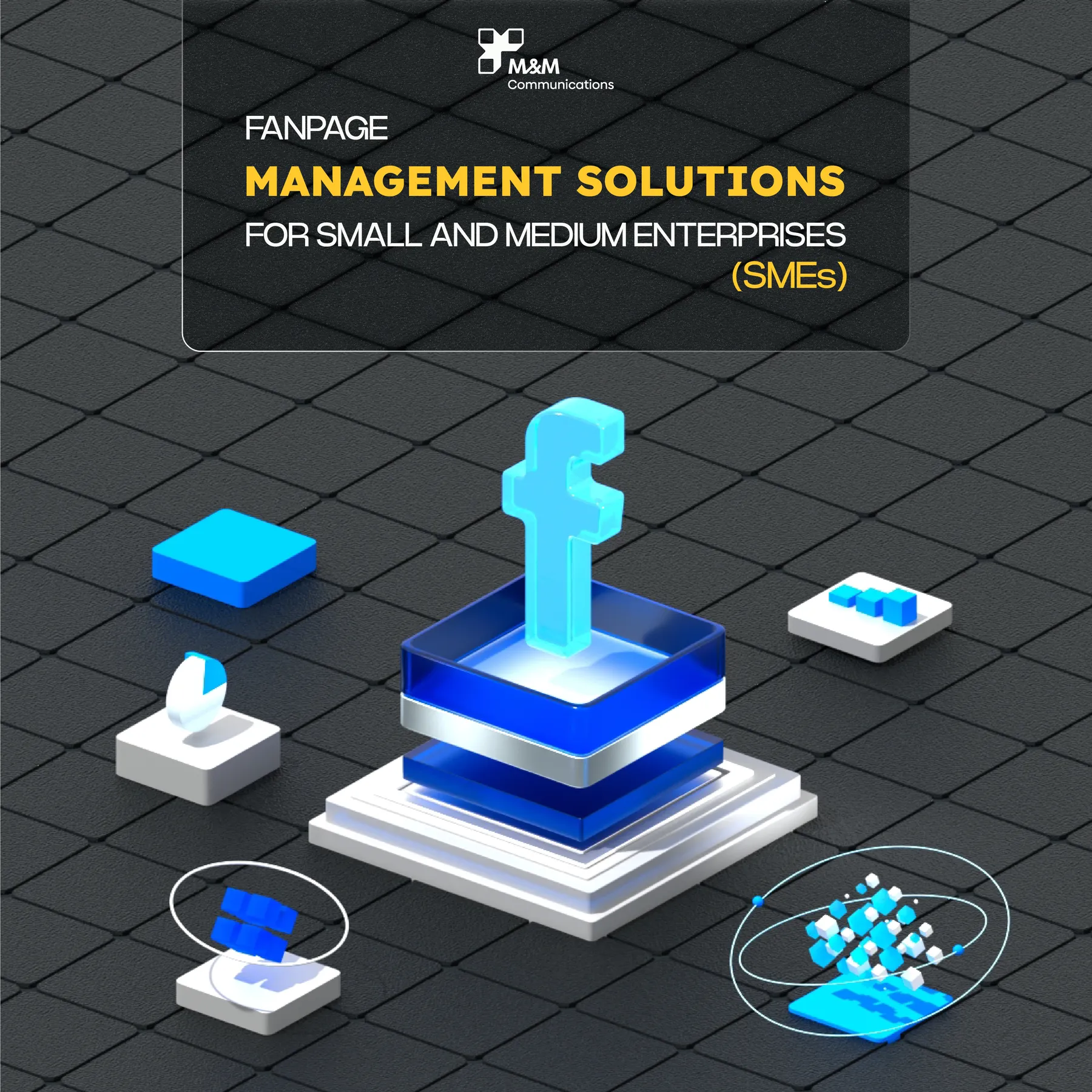
Vertical Video Strategy 2025: Mastering 9:16 Content for Mobile-First Audiences
The Vertical Revolution: Why Mobile-First Video Strategy Matters
In 2025, over 75% of all video consumption happens on mobile devices, and users hold their phones vertically more than 90% of the time. Yet many brands still create horizontal video designed for television viewing, forcing mobile audiences to rotate devices, view tiny letterboxed content, or miss the experience entirely.
At M&M Communications, we've witnessed the dramatic shift from landscape-dominated video to vertical-first strategy. The platforms driving video engagement—TikTok, Instagram Reels, YouTube Shorts, Snapchat—all prioritize vertical content. Brands embracing 9:16 aspect ratio content see engagement rates 3-5x higher than landscape equivalents, with completion rates improving by 40-60%.
Vertical video isn't simply rotated horizontal content. It requires rethinking composition, framing, storytelling, and production workflows. The brands succeeding in mobile-first video understand that vertical represents a fundamental shift in how audiences consume content, not merely a technical format variation.
Understanding the 9:16 Aspect Ratio
The 9:16 aspect ratio matches how people naturally hold smartphones—vertical orientation. Standard horizontal video uses 16:9 (1920x1080 pixels), while vertical video inverts this to 9:16 (1080x1920 pixels). This seemingly simple rotation creates profound implications for composition, shooting, editing, and audience engagement.
Mobile Viewing Statistics Driving Vertical Adoption
The numbers tell the story of mobile dominance: 75% of video plays happen on mobile devices. Users spend 2.5x longer watching vertical video than horizontal on mobile. Vertical video generates 90% higher completion rates than landscape video on social platforms. The average person checks their phone 96 times daily, almost always in portrait orientation.
For social media specifically, vertical video occupies 78% more screen real estate than horizontal video viewed on mobile, creating more immersive experiences that capture and hold attention more effectively. This translates to measurable business impact—vertical video ads on Instagram show 33% higher click-through rates and 20% lower cost per engagement than landscape alternatives.
Platform-Specific Vertical Video Strategies
TikTok: Vertical Native Platform
TikTok pioneered mainstream vertical video consumption, building an entirely vertical-only platform that now reaches over 1.5 billion monthly active users. Content on TikTok must be vertical—horizontal videos appear with massive black bars, effectively dead on arrival.
Optimal specifications: 1080x1920 pixels (9:16), MP4 or MOV format, H.264 codec, 30-60 fps, maximum 10 minutes (though shorter performs better), file size under 287MB.
Content strategy: TikTok rewards authenticity over production polish. Focus on the first 3 seconds—users decide immediately whether to continue watching. Embrace trends, use popular sounds, and participate in challenges. Vertical framing allows close-ups that create intimacy and connection. Include text overlays for accessibility (many watch muted).
Success metrics: Completion rate matters more than view count. Videos watched through to the end signal quality to the algorithm, increasing distribution. Aim for 60%+ completion rates by keeping content concise and valuable.
Instagram Reels and Stories: Vertical Ecosystem
Instagram embraced vertical with Stories in 2016, then Reels in 2020 to compete with TikTok. Today, Instagram prioritizes vertical video across the platform, with Reels appearing in feeds, Explore pages, and dedicated Reels tabs.
Reels specifications: 1080x1920 pixels, 90 seconds maximum (though 15-30 seconds performs best), MP4 format, 30 fps minimum.
Stories specifications: 1080x1920 pixels, 15 seconds per story segment, MP4 or MOV format, can chain multiple segments into sequences.
Content strategy: Reels favor entertainment and education over promotion. Show personality, teach something valuable, or entertain. Stories allow more casual, behind-the-scenes content building ongoing relationship with followers. Use interactive elements (polls, questions, quizzes) to boost engagement.
Design considerations: Keep critical elements away from edges (Instagram UI overlays profile pictures, captions, buttons). Design for the 'safe zone'—central area guaranteed to remain visible regardless of UI elements.
YouTube Shorts: Search-Optimized Vertical
YouTube Shorts launched in 2021, bringing vertical video to the platform with 2 billion monthly logged-in users. Shorts leverage YouTube's discovery algorithm and existing subscriber bases, making it powerful for brands already established on YouTube.
Specifications: 1080x1920 pixels, 60 seconds maximum, vertical or square formats supported.
Content strategy: Shorts benefit from YouTube's search capabilities—optimize titles, descriptions, and hashtags for discovery. Tease longer horizontal content with vertical Shorts to drive traffic to main channel videos. Educational content performs exceptionally well—quick tips, tutorials, explanations.
Monetization: YouTube Shorts Fund pays creators based on performance. Long-term, vertical content helps build audiences that consume longer horizontal content where ad revenue higher.
Snapchat: Original Vertical Pioneer
Snapchat invented vertical video for social media in 2011, building an entire platform around smartphone-native content. While TikTok and Instagram dominate mindshare, Snapchat reaches 375+ million daily active users, particularly strong among Gen Z and millennials.
Specifications: 1080x1920 pixels, MP4 or MOV, maximum 60 seconds for Spotlight (Snapchat's TikTok competitor).
Content strategy: Snapchat audiences expect casual, authentic content. Leverage AR lenses and filters unique to the platform. Spotlight content can go viral and earn creator payments. Stories remain core to platform engagement.
Production Techniques for Vertical Video
Composition and Framing
Vertical aspect ratio inverts traditional composition rules developed for landscape video. Where horizontal video emphasizes width for establishing shots and context, vertical video creates intimacy through height and closeness.
Subject placement: Center subjects vertically, using the natural eye-line of portrait orientation. The rule of thirds still applies, but consider vertical divisions—top third for headroom, middle third for eyes/face, bottom third for context or negative space.
Headroom and feet room: Vertical framing provides more vertical space than horizontal. Avoid excessive headroom above subjects—this wastes valuable screen real estate. For full-body shots, the tall frame naturally accommodates standing subjects without excessive space above or below.
Depth and layers: Create visual interest through vertical layering—foreground, subject, and background elements stacked vertically rather than arranged horizontally. This maintains engagement in the narrow horizontal field.
Camera Techniques
Shooting natively vertical: Modern smartphones shoot vertical video naturally—simply hold the phone upright and record. For DSLR/mirrorless cameras, rotate the entire camera 90 degrees or use a cage/rig designed for vertical orientation. Rotating in post-production from horizontal to vertical wastes resolution and limits flexibility.
Movement: Vertical video handles vertical camera movements (tilts up/down, elevating/lowering shots) more naturally than horizontal pans. Leverage this by designing shots with vertical movement and reveals.
Stabilization: Shaky vertical video feels more disorienting than horizontal equivalents. Use gimbals, smartphone stabilizers, or software stabilization. Many phones include excellent built-in stabilization for vertical recording.
Lighting for Vertical Format
Lighting principles remain consistent regardless of aspect ratio, but vertical framing influences practical application.
Key light positioning: Standard 45-degree key light placement works well, creating dimension across the narrower horizontal frame. Ring lights, popular for mobile content creation, provide flattering illumination ideal for vertical close-ups.
Background separation: With limited horizontal width, separating subjects from backgrounds through lighting becomes more critical. Use backlighting or rim lighting to create edge definition preventing subjects from blending into backgrounds.
Text and Graphics
Vertical video accommodates text overlays naturally—the tall format provides space for captions, titles, and graphics without obscuring the main subject.
Caption placement: Position text in the lower third, avoiding the very bottom where platform UI elements appear. Use high contrast (white text on dark backgrounds or vice versa) for readability on small screens.
Font size: Mobile viewing requires larger text than desktop. Minimum 60-80 pixels for body text, 100+ for headlines. Test legibility on actual mobile devices at arm's length.
Animated text: Movement attracts attention. Animated text—simple slides, fades, or bounces—performs better than static captions while maintaining readability.
Editing Workflows for Vertical Content
Mobile-First Editing Apps
CapCut: Free mobile and desktop app optimized for vertical video editing. TikTok-owned, with templates and effects designed for viral vertical content. Excellent for quick edits directly on smartphones.
InShot: Popular mobile editor with vertical templates, music library, and effects. Great for Instagram Reels and TikTok content creation. Free with premium features available.
VN Video Editor: Clean interface, no watermarks on free version, curve-based editing for precise control. Handles multi-layer editing well on mobile devices.
Desktop Editing for Vertical
Adobe Premiere Pro: Create vertical sequences (1080x1920) in project settings. Premiere handles vertical timeline efficiently, with full access to professional color grading, effects, and export options.
Final Cut Pro: Custom resolution support allows vertical timelines. Magnetic timeline adapts well to vertical editing workflows. Excellent performance on Apple Silicon Macs for vertical 4K editing.
DaVinci Resolve: Free version includes vertical timeline support. Professional color grading particularly valuable for making vertical content visually distinctive and polished.
Editing Best Practices
Pacing: Vertical social content requires faster pacing than traditional horizontal video. Cut every 3-5 seconds to maintain momentum and attention. Younger audiences especially expect dynamic editing.
Transitions: Quick cuts work better than elaborate transitions for most vertical content. When using transitions, prefer vertical movements (slide up/down, vertical wipes) that complement the format.
B-roll integration: Limited horizontal space makes traditional B-roll placement challenging. Use picture-in-picture, split screens, or rapid cuts to incorporate supplementary footage without losing subject focus.
Repurposing Horizontal Content to Vertical
Many brands have libraries of horizontal content they want to leverage for vertical platforms. While shooting native vertical provides best results, smart repurposing extends content value.
Smart Cropping Techniques
Automated tracking: Tools like Premiere Pro's Auto Reframe or Kapwing's Smart Resize use AI to automatically crop horizontal to vertical, tracking subject movement to keep them centered in the vertical frame.
Manual keyframing: For important content, manually keyframe crop positions throughout the video, ensuring critical elements remain visible while optimizing composition for vertical viewing.
Multi-person scenes: Horizontal content with multiple people side-by-side doesn't convert well to vertical. Consider splitting into multiple vertical clips, each focusing on one person, or accepting that not all content translates effectively.
Creative Repurposing
Picture-in-picture approach: Keep horizontal video at full width at top or center of vertical frame, using remaining space for text, graphics, or branding. This acknowledges the format mismatch while utilizing vertical real estate.
Selective extraction: Identify the most compelling 15-30 second moments from longer horizontal videos, extracting and optimizing them as standalone vertical clips. This creates vertical highlights rather than converting entire videos.
Vertical Video Advertising Strategy
Platform Ad Specifications
Facebook/Instagram vertical ads: 9:16 ratio, 1080x1920 pixels, maximum 120 seconds (15-30 seconds recommended for optimal performance), file size under 4GB.
TikTok ads: Same technical specs as organic content—1080x1920, 9:16, 5-60 seconds. Perform best when mimicking organic content style rather than looking obviously like ads.
YouTube vertical ads: Can appear in YouTube Shorts feed, maximizing mobile reach. Specifications match Shorts requirements—1080x1920, vertical orientation, 60 seconds maximum.
Performance Benchmarks
Vertical video ads consistently outperform horizontal equivalents on mobile-dominant platforms. Industry data shows vertical ads achieve 20-35% higher completion rates, 25-40% higher click-through rates, and 15-25% lower cost per action compared to landscape ads shown on mobile devices.
Creative Best Practices for Vertical Ads
Hook within 2 seconds: Vertical social feeds move fast. Capture attention immediately with compelling visuals, unexpected moments, or direct questions.
Design for sound-off viewing: 85% of social video plays without sound initially. Use text overlays, visual storytelling, and expressive imagery that communicates value without audio.
Brand early: Don't wait until the end to reveal your brand. Subtle branding in the first few seconds ensures brand recognition even from incomplete views.
Clear call-to-action: Vertical format provides space for prominent CTAs without obscuring content. Place buttons or swipe-up prompts in lower third with clear, action-oriented language.
Analytics and Performance Measurement
Key Metrics for Vertical Video
Completion rate: Percentage of viewers watching through to the end. Target 50%+ for platform algorithm favorability. Vertical content typically achieves 40-60% higher completion rates than horizontal equivalents on mobile.
Engagement rate: Likes, comments, shares relative to views. Vertical video generates 2-3x higher engagement rates on social platforms.
Click-through rate: For videos with CTAs, measure clicks relative to views. Vertical video ads show 25-40% higher CTRs than landscape on mobile placements.
Watch time: Total minutes watched across all viewers. Platforms like YouTube prioritize watch time in recommendations—more watch time signals quality content worthy of distribution.
A/B Testing Vertical Variables
Systematically test creative elements to optimize vertical performance:
- Hook variations—test different opening moments to identify what captures attention best
- Length testing—compare 15, 30, and 60-second versions to find optimal duration for your audience
- Text placement—experiment with caption positioning, font sizes, and animation styles
- Pacing—test fast-cut vs slower-paced editing to determine audience preferences
Future Trends in Vertical Video
Extended Vertical Content
While short-form vertical dominates currently, longer vertical content emerges as audiences become accustomed to the format. YouTube supports vertical videos of any length, Instagram Reels expanded to 90 seconds, and TikTok allows up to 10 minutes. Expect vertical content length to increase as storytelling techniques mature.
Vertical Live Streaming
Live vertical streaming grows on Instagram Live, TikTok Live, and emerging platforms. The intimate, mobile-native format suits authentic real-time connection with audiences.
Vertical Commerce
Shoppable vertical video integrates product discovery with mobile shopping. TikTok Shop, Instagram Shopping, and YouTube Shopping enable purchases directly from vertical video content, collapsing the funnel from discovery to purchase.
AR and Interactive Vertical
Augmented reality filters and interactive elements leverage vertical smartphone orientation. Users point cameras at themselves or environments, experiencing AR effects in vertical format. Interactive vertical video with polls, quizzes, and choose-your-path narratives engages audiences actively rather than passively.
Conclusion: Embracing Mobile-First Video Strategy
Vertical video represents more than a format choice—it's recognition that audiences consume content primarily on mobile devices held vertically. Brands clinging to horizontal-only strategies miss opportunities to engage audiences where they actually are, on their terms, in formats optimized for their viewing behavior.
The shift to vertical requires rethinking production, composition, editing, and distribution. But the rewards justify the adaptation—dramatically higher engagement rates, better completion metrics, lower advertising costs, and audiences who actually watch and respond to content rather than scrolling past.
At M&M Communications, we help businesses navigate this transition, developing vertical-first content strategies that drive measurable results. Whether creating native vertical content or intelligently repurposing existing assets, the vertical revolution demands strategic response.
Ready to develop a vertical video strategy that reaches and engages mobile-first audiences? M&M Communications specializes in vertical content production and strategy for TikTok, Instagram, YouTube Shorts, and beyond. Contact us at 0909 123 456 or email hello@mmcom.vn to discuss your vertical video opportunities.






